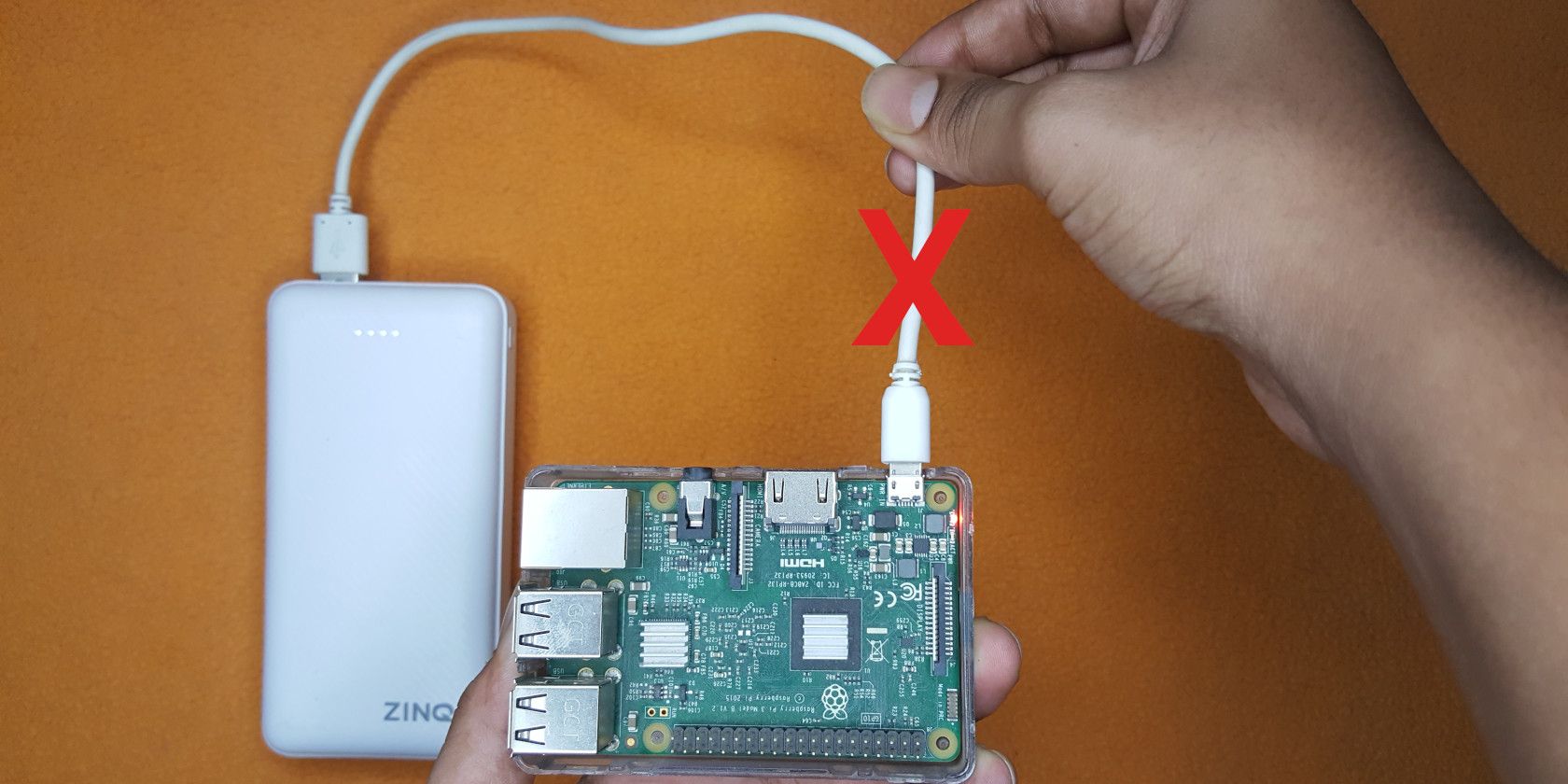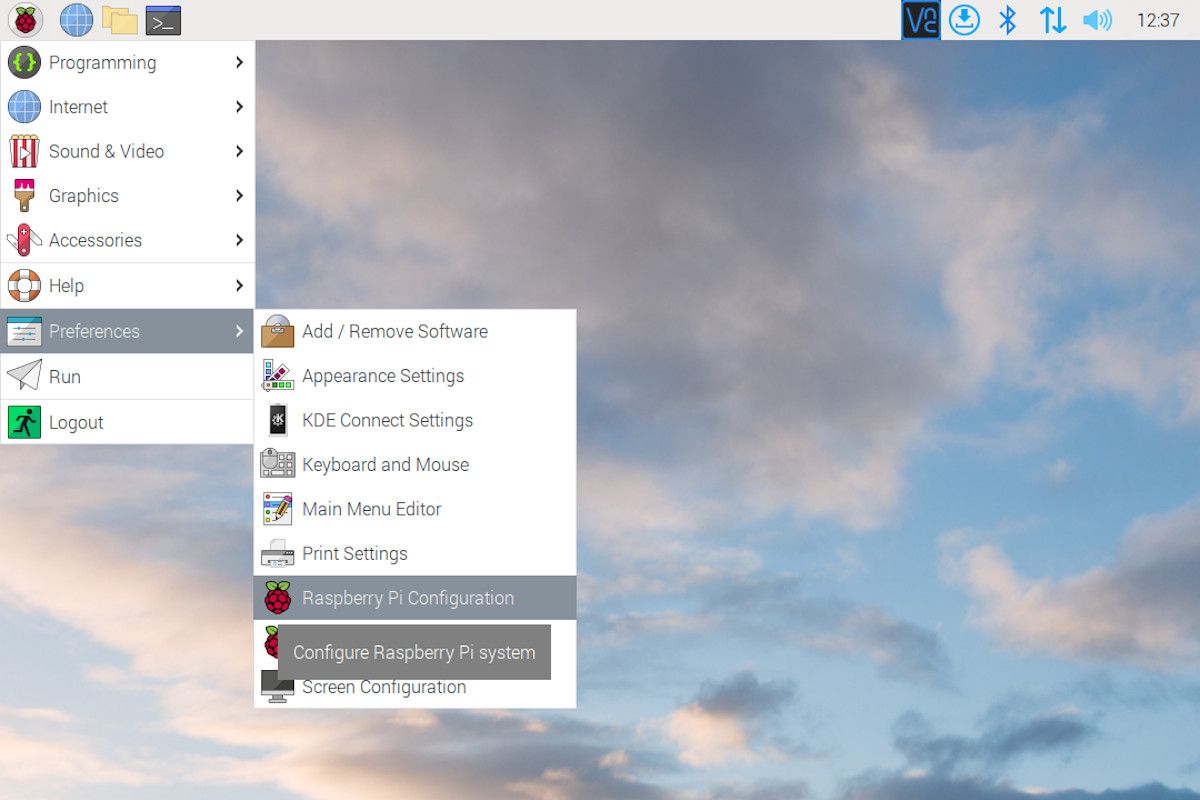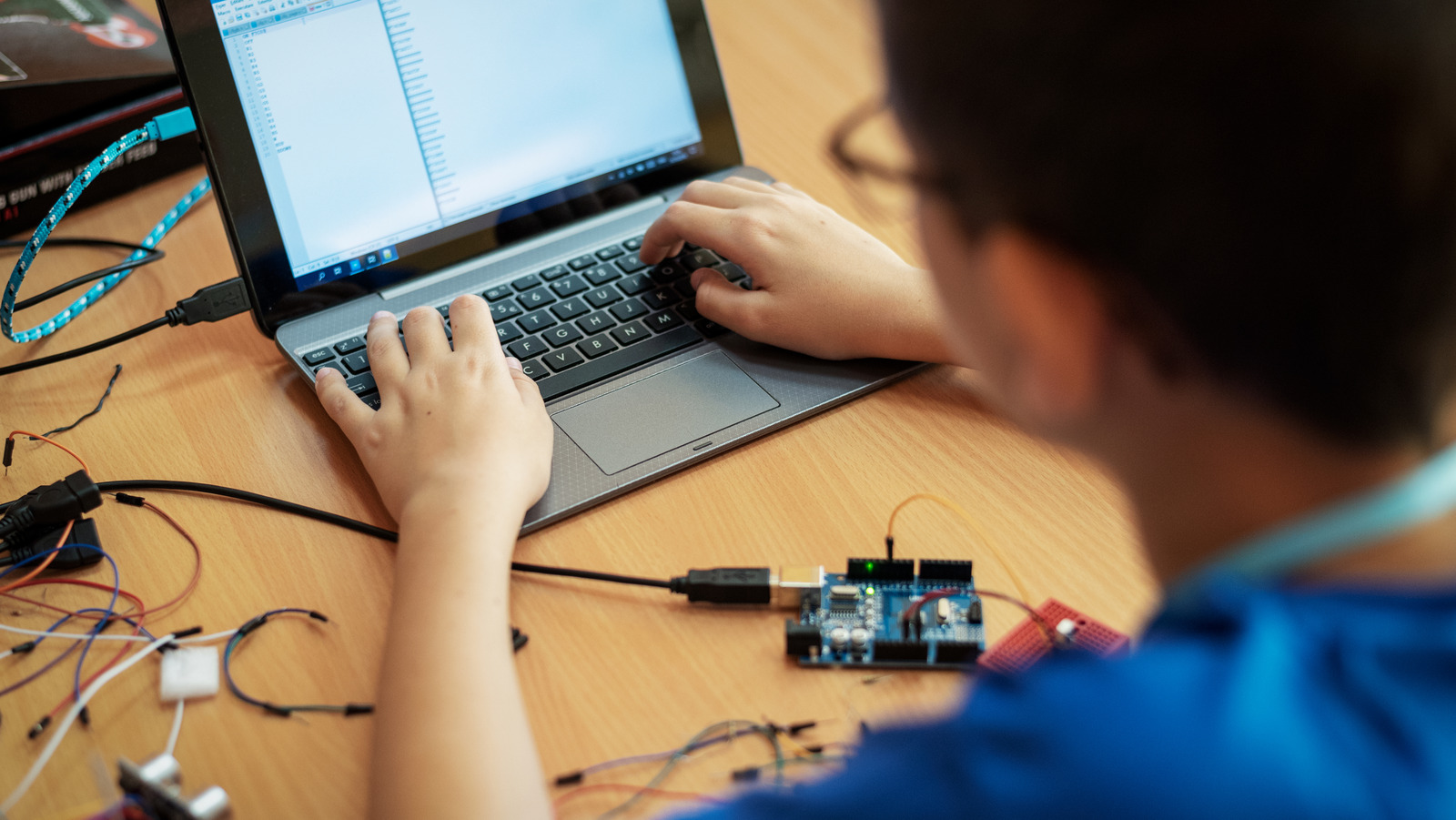Detail Author:
- Name : Melvina Luettgen
- Username : koepp.ransom
- Email : okon.noemi@koss.com
- Birthdate : 1998-12-22
- Address : 29476 McGlynn Creek Winfieldport, NV 35045-3343
- Phone : +1-571-882-3471
- Company : Ledner-Hermann
- Job : Environmental Engineer
- Bio : Fugiat dolorum ut aspernatur. Eveniet consequatur vitae quidem voluptas. Sit nesciunt sit quam optio ipsa nisi sequi.
Socials
linkedin:
- url : https://linkedin.com/in/lucasbernhard
- username : lucasbernhard
- bio : Culpa dignissimos odit ratione vel tempore.
- followers : 239
- following : 229
facebook:
- url : https://facebook.com/lucas6476
- username : lucas6476
- bio : Sapiente totam recusandae quos commodi beatae molestias nihil deserunt.
- followers : 3467
- following : 1917
tiktok:
- url : https://tiktok.com/@lucas_bernhard
- username : lucas_bernhard
- bio : Cumque eos nobis culpa aut et alias.
- followers : 372
- following : 16
Do you ever wish you could check on your Raspberry Pi, tinker with a project, or fix a small issue without actually being right there with it? It’s a common thought, especially when your little computer lives in a tricky spot, like tucked away behind a TV or powering a smart home setup in the attic. You know, it's almost like having a tiny server you can’t always reach easily.
The ability to manage your Raspberry Pi from afar really changes how you use it. Think about it: you can keep an eye on things, start programs, or even make big changes from your laptop in another room, or even when you're out and about. This kind of control, where you can directly handle and manipulate your device toward a desired result, is what we mean by "manage" here. It lets you bring about or succeed in accomplishing tasks, sometimes despite difficulty, and truly be in charge of your system.
So, if you're keen to take charge of your Raspberry Pi without needing to plug in a screen and keyboard every time, you're in the right spot. We’re going to look at some free and simple ways to manage your Raspberry Pi remotely, making your projects a whole lot easier to deal with. This approach, you see, helps you skillfully handle your Pi from anywhere.
Table of Contents
- Why Remote Management for Your Raspberry Pi?
- Understanding the Basics of Remote Access
- Important Security Tips for Remote Pi Access
- Frequently Asked Questions About Remote Pi Management
- Getting Started with Your Remote Pi
Why Remote Management for Your Raspberry Pi?
Having your Raspberry Pi run headless, meaning without a screen, keyboard, or mouse connected, is a pretty common setup. Many people use their Pi for things like a home media server, a network-wide ad blocker, or even a small web server. For these uses, having physical access all the time just isn't practical. It's like having a little helper doing its job in the background.
Being able to manage your Raspberry Pi remotely means you can still be responsible for controlling it, just as if you were right there. You can update software, check on running programs, or even restart it if something goes wrong, all from another computer or even your phone. This ability to succeed in doing or dealing with something, especially something difficult from a distance, is a big plus.
This way of working gives you a lot of freedom. You don't have to move your Pi, or find spare peripherals, just to make a small change. It really helps you to take charge or care of your projects with much more ease. In some respects, it makes your Pi projects much more flexible.
Understanding the Basics of Remote Access
When we talk about managing your Raspberry Pi remotely for free, we are basically looking at ways to connect to it over a network. This network could be your home Wi-Fi, or even the wider internet. The goal is to send commands or see what's happening on the Pi's screen without being physically next to it. So, how do we make that happen?
There are a few popular methods that don't cost anything to use. Each has its own way of working, and some are better for certain tasks than others. We'll look at the main ones, helping you choose what fits your needs best. It's about finding the right tool to skillfully handle your Pi, you know?
SSH (Secure Shell): The Command-Line Friend
SSH is probably the most common way people manage a Raspberry Pi remotely. It lets you access your Pi's command line interface from another computer. This means you type commands just like you would if you were directly connected to the Pi. It’s very light on resources and very powerful, actually.
To use SSH, you first need to make sure it's turned on in your Raspberry Pi's settings. You can do this through the Raspberry Pi Configuration tool if you have a screen, or by creating an empty file named `ssh` in the boot partition of your SD card before you even put it in the Pi. This is a very simple first step, you see.
Once SSH is active, you can open a terminal on your computer (or use a program like PuTTY on Windows) and type `ssh pi@your_pi_ip_address`. Replace `your_pi_ip_address` with the actual network address of your Pi. You'll then be asked for your Pi's password, which is `raspberry` by default. After that, you're in! You can now run commands, update software, and basically do anything you could do directly on the Pi's command line. This method truly helps you succeed in accomplishing tasks, even with difficulty, from afar.
A big plus for SSH is its security; it encrypts the connection, keeping your commands and data safe. A small drawback is that it's text-based, so if you prefer a visual interface, you might want to look at other options. But for system administration and quick fixes, it's incredibly useful, and pretty much the standard for remote server management.
VNC (Virtual Network Computing): For a Visual Touch
If you prefer to see your Raspberry Pi's desktop environment, just like you would if a monitor were plugged in, VNC is a great choice. It gives you a graphical view of your Pi, letting you open applications, click icons, and move windows around. This is very helpful for graphical tasks, obviously.
Setting up VNC involves installing a VNC server on your Raspberry Pi and a VNC client on the computer you're using to connect. RealVNC Connect is a popular choice, and a free version is available for personal use. You can enable VNC through the Raspberry Pi Configuration tool, similar to SSH. It's usually found under the "Interfaces" tab. You'll then need to set a password for your VNC connection, which is different from your Pi's login password. So, you know, there's an extra step there.
Once the VNC server is running on your Pi, open your VNC client on your other device and enter your Pi's IP address followed by a colon and the display number (usually `:1` or `:0`). For instance, `192.168.1.100:1`. Enter the VNC password you set, and you should see your Pi's desktop appear. It’s like magic, letting you control your Pi with exemplary skill, just as if you were sitting right in front of it.
VNC is wonderful for tasks that need a visual interface, like browsing the web on your Pi or working with graphical programs. However, it uses more network bandwidth than SSH because it's sending screen updates. This means it might feel a bit slower, especially over a less speedy connection. But for a full desktop experience, it's pretty much essential.
RDP (Remote Desktop Protocol): Windows-Friendly Access
For those who mostly use Windows computers, RDP can be a very familiar way to get a graphical desktop from your Raspberry Pi. Windows has a built-in Remote Desktop Connection client, so you don't need to install extra software on your Windows machine. This is very convenient, you know.
To use RDP with your Raspberry Pi, you'll need to install an RDP server on the Pi itself. A popular free option is `xrdp`. You can install it by opening a terminal on your Pi (or connecting via SSH) and typing `sudo apt update` followed by `sudo apt install xrdp`. This process is fairly straightforward, honestly.
After `xrdp` is installed, you can open the "Remote Desktop Connection" application on your Windows computer. Type in your Raspberry Pi's IP address and click "Connect." You'll then be prompted for your Raspberry Pi's username (usually `pi`) and password. Once entered, you should see your Pi's desktop. It's a very similar experience to VNC, but it feels more native for Windows users, which is nice.
RDP offers a smooth graphical experience, especially within a local network. It’s a good alternative to VNC if you're heavily invested in the Windows ecosystem. Just like VNC, it does use more bandwidth than SSH, so keep that in mind if your network connection isn't the fastest. It helps you manage your Pi effectively, allowing you to bring about or succeed in accomplishing tasks with ease.
Setting Up a Personal VPN for Ultimate Security
While SSH, VNC, and RDP let you connect to your Pi, they usually work best within your home network. If you want to manage your Raspberry Pi when you are away from home, you'll need a way to securely access your home network. Setting up your own Virtual Private Network (VPN) server on your Raspberry Pi is a fantastic free solution for this. It's a bit more involved, but it offers a very secure way to connect, pretty much like you're still at home, you see.
A VPN creates a secure, encrypted tunnel from your remote device (like your laptop or phone) to your home network. Once connected to your VPN, your remote device acts as if it's physically inside your home network. This means you can then use SSH, VNC, or RDP to connect to your Raspberry Pi using its local IP address, just as if you were sitting on your couch. This approach truly helps you to take charge or care of your home network from anywhere.
Popular free VPN server software for Raspberry Pi includes OpenVPN or WireGuard. Setting these up usually involves a script that automates most of the process, like PiVPN. You run a command, answer a few questions, and the script handles the installation and configuration. You will also need to configure your home router to forward the VPN's port to your Raspberry Pi. This part can be a little tricky, but there are many guides online for specific router models. So, it requires a bit more effort, but the payoff is significant, actually.
The main benefit of a personal VPN is the strong security it provides for all your home network traffic when you're away. It also simplifies remote access to all your devices, not just the Pi, because everything appears to be on the same local network. The downside is the initial setup complexity and the need for a stable internet connection at home with a public IP address (or a dynamic DNS service). But once it's working, it lets you skillfully handle your entire network from a distance, which is very cool.
Important Security Tips for Remote Pi Access
When you open your Raspberry Pi to remote connections, you're also opening it up to potential risks. It's really important to take steps to keep your Pi safe. You want to make sure only you can manage it. This is a bit like locking your front door, you know?
First, always change the default password for the `pi` user. The default is `raspberry`, which is very well-known. A strong, unique password is your first line of defense. You should also consider creating a new user account for yourself and disabling the `pi` user entirely. This adds an extra layer of protection, as a matter of fact.
For SSH, consider using SSH keys instead of passwords. SSH keys are much more secure and harder to guess than passwords. You generate a pair of keys: one private (which stays on your computer) and one public (which goes on your Pi). When you connect, your computer uses the private key to prove its identity to the Pi. It’s a very robust way to authenticate, and something you should definitely look into. Learn more about SSH key setup on our site.
If you're forwarding ports on your router to allow direct access from the internet (which is generally not recommended unless you know what you're doing, and even then, use a VPN), make sure you only forward the necessary ports. For instance, SSH uses port 22. You might also consider changing the default port for SSH to a different, less common port, say 2222. This won't stop a determined attacker, but it will deter automated scanning bots. It's a small step that can make a difference, you know?
Keep your Raspberry Pi's software updated. Regularly run `sudo apt update` and `sudo apt upgrade` to get the latest security patches and bug fixes. Outdated software can have vulnerabilities that attackers might exploit. This is a crucial habit for any system, really, helping you to succeed in dealing with potential problems before they become big issues. You can find more tips on keeping your Pi secure on this page.
Finally, if you're using a public Wi-Fi network to connect to your Pi, always use a VPN. This encrypts your connection and protects your data from snoopers on the public network. It’s a very smart move for overall digital safety, and helps you to dominate or influence your connection's security by tact.
Frequently Asked Questions About Remote Pi Management
Is it safe to manage my Raspberry Pi from anywhere?
Managing your Raspberry Pi from anywhere can be safe, but it really depends on how you set it up. Using secure methods like SSH with key authentication, or connecting through a personal VPN server on your Pi, makes it much safer. Avoid directly exposing services like VNC or RDP to the internet without a VPN, as these can be less secure. It's about being responsible for controlling your connection, you know?
What is the easiest way to access Raspberry Pi without a screen?
For many, SSH is the easiest way to access a Raspberry Pi without a screen. It only requires a network connection and a simple command-line tool. You can set it up by putting an empty file called `ssh` on the boot partition of your SD card before you start the Pi for the first time. This lets you get in quickly and manage your system by typing commands, which is very direct.
Can I use my phone to control my Raspberry Pi?
Yes, you can absolutely use your phone to control your Raspberry Pi! There are SSH client apps available for both Android and iOS that let you access the command line. For graphical access, there are VNC client apps too. If you set up a personal VPN on your Pi, you can even connect to that VPN from your phone first, and then access your Pi securely from anywhere. It's a very convenient way to take charge of your Pi, even when you're out and about.
Getting Started with Your Remote Pi
Getting your Raspberry Pi set up for remote access is a very useful step for any project. It lets you be in charge of your device, handle tasks, and make changes without needing to be right next to it. Whether you pick SSH for its command-line power, VNC for a visual experience, or even a VPN for ultimate security when you're far from home, each method helps you succeed in accomplishing your goals. This way of working, you see, helps you skillfully handle your Pi, no matter where you are.
The key is to pick the method that best fits what you want to do, and always remember to keep security in mind. By changing default passwords and keeping your software updated, you're already doing a lot to protect your little computer. So, go ahead, give remote management a try and see how much easier it makes your Raspberry Pi adventures. It's a pretty big step in making your Pi truly yours to manage, whenever you need to.


